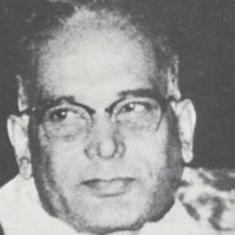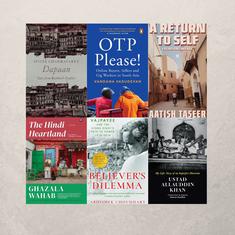The Big Story: Three hugs
Indian Prime Minister Narendra Modi was given a warm welcome at the White House on Monday, with US President Donald Trump spending more than four hours with him in various meetings. Modi’s Indian delegation first met with Trump’s team, after which the two leaders had a one-on-one session in the White House’s Oval Room. The two then read out separate statements in the Rose Garden, before heading back in for a “working dinner” the first time Trump has hosted a foreign leader in this manner in the White House since his tenure began in January.
The entire aim of the meeting was simply to establish personal relations between Modi and the new American administration. With the American government now overly reliant on the personality of its president, it was important that Modi develop a rapport with Trump right away, so that their teams can then lay down the priorities that will form the foundation of Indo-US ties. At least from the outset, this appears to have been achieved.
Donald Trump said India had a “true friend” in the White House. Modi insisted the US was India’s “primary partner” in its transformation. And the leaders hugged in front of the cameras. On three occasions.
After dinner, Pres & Mrs Trump escort PM Modi to his limousine to bid farewell with another hug. (Three by my count). pic.twitter.com/O7yqNVQ0zX
— Mark Knoller (@markknoller) June 26, 2017
Even if those were perfunctory, the warmth was clear to see, as was also made evident by the US decision to declare Syed Salahuddin, the leader of Kashmiri separatist group Hizbul Mujahideen, a specially designated terrorist just hours before Modi met Trump. The joint statement that followed also seemed a little more pointed, making sharp references to Pakistan and North Korea, while calling the US and India “leading engines of growth in the global economy”.
Well begun, however, may not be half done. American presidents have in the past been impressed by Indian leaders, only to be somewhat dismayed by how slow actual policy implementation often ends up being. India, meanwhile, has every reason to remain suspicious of Trump, despite the positive noises, since he has shown almost no ability to stick to his word.
Yet there is a tremendous opportunity in the warmth between the two leaders. Trump has approached the White House job like a business position, preferring to trust his deal-making style to America’s traditional policy stances. This has allowed allies, most notably Saudi Arabia, to influence Trump to their advantage in the last few months.
If the camaraderie is as good as it seemed in the photos, Modi has a similar chance here, especially on the security front. Trump appears as committed to questioning China and holding Islamic terror to account as India would like the US to be. New Delhi needs to use this opening and push the White House to go further – firmly backing India’s Nuclear Suppliers Group membership would be one place to start. Asking tougher questions of Pakistan might be another.
Trump is no trustworthy partner, and he has plenty on his plate at home that could distract his administration. India needs to make sure it takes advantage of what appears to have been a positive first meeting and move quickly on pending matters, or there may not be as many hugs next time.
Punditry
- “A big riot would concentrate the mind, make a damning headline. A protracted riot in slow motion, individual victims across different states, simply makes this appear another daily routine,” writes Pratap Bhanu Mehta in the Indian Express.
- Mihir S Sharma writes on Bloomberg View that his head tells him to be alarmed about the rushed roll out of the Goods and Services Tax, but his heart is hoping that it will all come together at the last minute.
- “Even as the process of insolvency resolution for the so-called flagship cases has been initiated, observers must be wondering how the elephant in the room has been consciously missed till now,” writes Hemant Manuj in Mint.
- Sanjay Hegde in the Indian Express, writes that it is important for courts to subject invocation of parliamentary privilege to stricter judicial scrutiny, after the Karnatka Assembly sentenced two editors to one-year prison terms for defamation.
Giggle
A spectator watching #INDvWI holding a placard which says 'We Eat Beef' in Port of Spain, West Indies #beefban pic.twitter.com/sfEDbqmtc3
— Aabid Shafi (@abidshafi) June 25, 2017
Don’t miss
Mridula Chari, Abhishek Dey and Arunabh Saikia explain why the government’s promise of buying crops at minimum support prices is often hollow, as part of our #FarmCrisis2017 series. Read all of the reports from the series here.
“While the Centre supports the procurement of wheat and rice, if states want to ensure their farmers can access minimum support prices for other crops, they need to use their own funds. They can also declare a bonus above the central minimum support price to encourage farmers to grow more of a certain crop. Maharashtra, for example, offered a bonus of Rs 500 per quintal for tur dal, above the declared price of Rs 5,050 in April.
But cash-strapped states are rarely in a position to procure the crops, let alone announce bonuses.
In Assam, for instance, the mechanism of minimum support price exists almost entirely on paper. Few farmers know about its existence. According to a senior official of the Assam Agriculture Marketing Board, the agency entrusted by the state government to buy produce from farmers at minimum support price, the board’s procuring power is severely limited by the lack of funds.”










